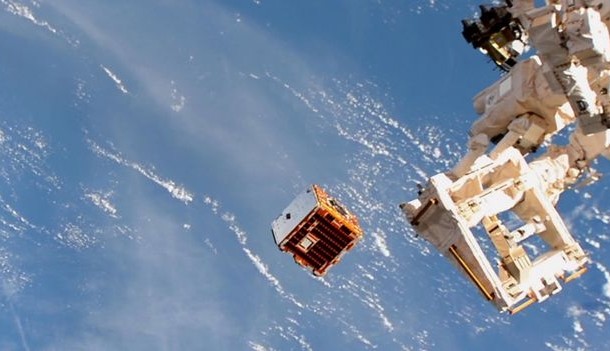Vacuuming in space
on

The purpose of the RemoveDEBRIS satellite is to try various techniques to clean up space 'junk'. In an early experiment the satellite ejected a small object that was subsequently 'caught' with the aid of a net.
Danger
Space flight hasn't existed for all that long (the first satellite, the Russian Sputnik 1, was launched in 1957), but in the little over 60 years of shooting satellites, capsules and probes into space, a belt of waste ('space junk') has accumulated around the Earth that comprises millions smaller and bigger pieces of metal, plastic and other things: from complete burnt-out rocket stages to worn-out satellites and tools, metal fragments and flecks of paint. All this junk is forming an increasing danger to both manned and unmanned space flight and communication satellites.
Cleaning up
Cleaning up is not so simple — just sweeping it up is just not possible. Also, exploding discarded rocket stages or satellites is not an option either: that only results in even more debris.
These days, satellites at the end of their useful life are usually manoeuvred into the direction of Earth, so that they will burn up in the atmosphere. For most of the small stuff that is not feasible, that will require some kind of active intervention.
RemoveDEBRIS
Here is where the RemoveDEBRIS satellite comes into play. This satellite (built under the direction of the University of Surrey, UK) will test several potential methods to clean up space a little. An experiment with a net has already been carried out; soon to be followed by a second experiment with a laser and camera to determine the behaviour of a potential quarry and so establish the best (safest) method of catching it. A third experiment uses a kind of harpoon to catch an object. And in a fourth experiment a 'sail' will be tried — a large membrane that will cause drag on an object so that after a few months it ends up in the denser atmosphere where it will burn up (at a height of 400 km there are still sufficient air molecules to make use of this effect).
(Video: The Newsmakers)
(Video: University of Surrey)


Discussion (0 comments)